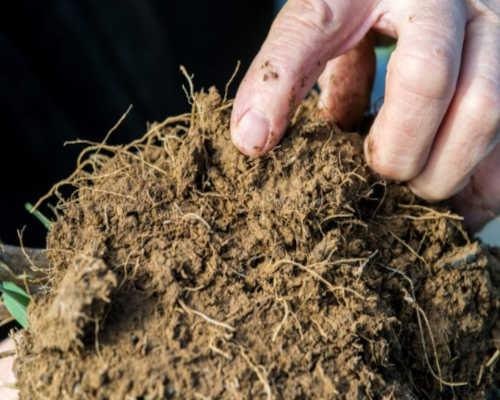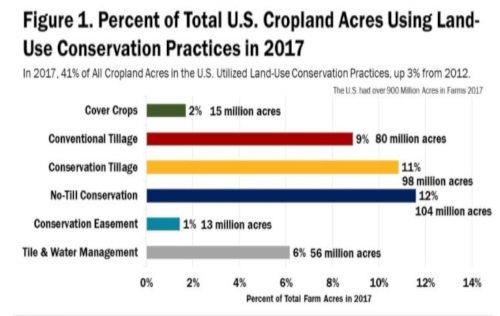
Roots and organic matter from cover crops planted and growing before a new commercial crop like wheat is planted help improve soil health and reduce erosion. Cover crops are a growing conservation practice in the United States.
Crop Rotation
Beyond the market incentives, reasons for planting different crops each year include improved soil health and enhanced biological diversity. In addition, crop rotation can reduce soil erosion and reduce pesticide costs, while also improving water quality. If a farmer incorporates a rotation of alfalfa and other legumes, there are fertilizer reduction benefits, as well.
No-till/ Strip-till/Conservation Tillage
Soil compaction is a constant challenge for farmers but limiting disturbances to the soil improves carbon retention and minimizes carbon emissions from soils. Avoiding full-width tillage, regardless of the depth or timing, if done long-term, can add organic matter to the soil as it decomposes and help to reduce soil compaction. Avoiding full-width tillage reduces soil erosion and protects water quality and can help keep water available for plants into the growing season after planting.
Nutrient Management
Precisely managing the source, rate, timing and placement of nutrients like nitrogen or animal manure as fertilizer can reduce the potential for waste or runoff of plant nutrients, which can improve soil conditions and overall crop production, prevent excess nitrogen runoff and reduce input costs.
Buffer Strips
These strips of grass, mixed grasses and legumes run along the contour of a farmed field to create a “buffer.” Buffer strips made up of native plants and grasses remove sediment, nutrients and crop protection products as they pass through, all while helping reduce soil erosion. Buffer strips can also provide habitats for pollinators and other beneficial insects.
Adoption of Conservation Practices
Taken only once every five years, the 2017 USDA Census of Agriculture is a survey-based count of U.S. farms and ranches and the people who operate them. The survey provides the most recent data regarding land use practices by the number of farms and the number of acres. In 2017, 41% of U.S. farmland involved conservation practices, an increase of 3% from 2012.
Figure 1 displays the percent of cropland acres utilizing each of the surveyed land-use conservation practices.

Click here to see more...